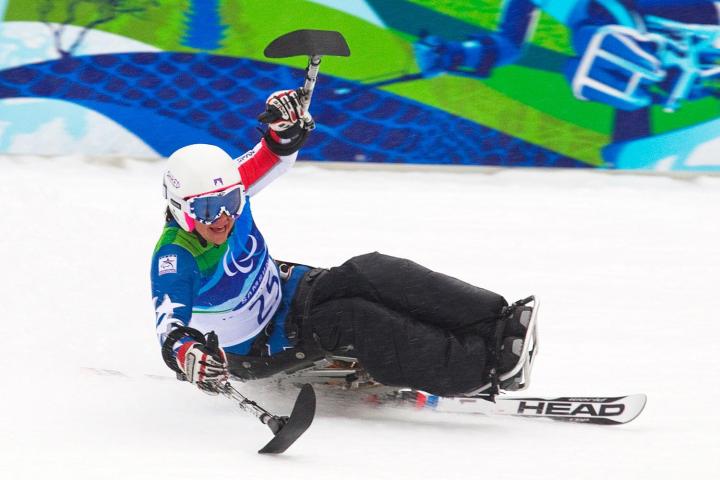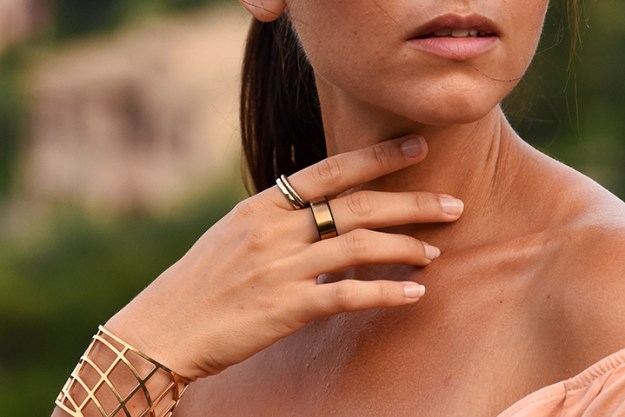
Few things in sports are more important than the relationship between an athlete and his equipment.
But for adaptive athletes like three-time Paralympic gold medalist Alana Nichols, who will compete in alpine events for the United States in the 2014 Paralympic Games this March in Sochi, the vast universe of gear enjoyed by the able-bodied has no equivalent.
Nichols uses a monoski (or sit ski), essentially a molded seat mounted on a frame, attached to a single ski by a footbed. Over the years, monoskis have become lighter, with better shock absorption systems, and allow athletes greater flexibility to manipulate their center of gravity through the positioning of the seat – or bucket, as it’s called – and how the rigs connect to the ski. Still, Nichols says, because the market is unquestionably niche, there is still a decidedly DIY, trial-and-error feel to the whole thing, particularly when it comes to the bucket.
“Most of what has happened in the sit-ski world is basically made in the garage.”
For able-bodied skiers, the last point of contact between the body and the gear is in the foot inside the boot. With the monoski, the bottom of the bucket becomes that place where the energy generated by the athlete is transferred into action from the ski. Getting it right requires a few things. First, fit. “You need the proper support around the core area without having it too tight. You don’t want to restrict your movement, but you need to have enough,” Nichols says.
From there, it’s a matter of finding the right behavior. Too rigid and it becomes unsafe, potentially causing injury in a crash. Too flexible and the ski won’t perform.
That was Nichols’ problem. The soft plastic of her bucket had too much play, giving not just at the top to allow freedom of movement (that’s good) but the bottom as well, making it far less reactive (that’s bad). In search of higher performance, she turned to BMW’s North American division, the same folks responsible for America’s new two-man bobsled design making its Olympic debut in Sochi. They hooked her up with Hans DeBot of deBotech, Inc., literally a Hall-of-Famer in the world of mechanical and aerospace engineering.

DeBot specializes in carbon fiber and composites (he’s known as “Carbon Hans”), and has a long history of cooperation with Olympic sports, not just in bobsled construction, but working with Team USA’s skeleton sleds as well. He immediately understood the critical role of the bucket for Nichols. “Alana’s bucket is kind of an extension of her body. Whereas the body (of a bobsled) is an extension of the actual bobsled,” he says. “(Bobsled drivers are) putting in more input through the physical steering, where Alana is doing it physically from the movements of her body.”
Nichols’ competition schedule made it impossible for her to visit DeBot’s North Carolina headquarters personally, but she was able to have “multiple lengthy phone calls” with him, and send her existing bucket for comparison. What Nichols felt on the hill was confirmed by DeBot’s testing. “It lets go of too much energy,” he says. “If she puts the input in with her body and that input is lessened or delayed to the ski, then she’s losing that positive reactive energy to control her ski.”
DeBot mixed and matched materials to give Nichols a bucket that would behave the way she wanted.
From there, DeBot mixed and matched materials to give Nichols a bucket that would behave the way she wanted. “It is carbon and a Kevlar based. There are different materials in there that are blends, so there may be a 50/50 blend between carbon and kevlar, some places it might be 100 percent of one or the other”, he says, “and some other little added materials that I’ll probably just leave to the world to guess about.”
The direction of the fiber, the placement, and the process itself all lend to the end result, DeBot says. People might look at it and see a simple carbon fiber seat, but they’d be missing a lot of nuance.
Nichols regrets that she couldn’t make it to North Carolina in person for a fitting – “I shipped my bucket to North Carolina, but ideally I would have shipped myself out there to get a mold,” she says – but it still makes a significant difference. “One of the hardest things is that every disability is like a snowflake. I have a T-11 spinal cord injury and it’s incomplete, but the guy next to me could have the “same” injury and be able to walk. And I can’t move my legs,” says Nichols, who has a masters in kinesiology.

“Off the rack” may often be the only option, but it’s not a good one. Nichols frequently sees athletes incur additional injuries because of poorly fitted equipment, on and off the mountain.
So having something constructed specifically for her from high-end materials by the go-to guy for carbon fiber gives her a real boost heading into Sochi, assuming she can adjust to the new gear fast enough. For DeBot, the opportunity to work with someone like her is its own reward.
“She took adversity and stared it right back in the face, and is still competing in the Olympics. It’s easier to give up,” he says. “When someone comes to me and says “Hey, I need some help and you’re the expert,” it prides me. That’s how I got started in Olympics.”
(Images © Team USA)


